Indoor plants have become an essential part of modern living spaces—adding life, freshness, and beauty to homes and workplaces. But while many plant lovers focus on sunlight, watering schedules, and fertilizers, one crucial factor often goes unnoticed: drainage holes.
At first glance, drainage holes may seem like a small design feature at the bottom of pots, but they play a huge role in keeping plants healthy. In fact, many cases of wilting, yellowing, or dying indoor plants can be traced back to poor drainage.
In this article, we’ll explore why drainage holes matter so much for indoor plants, how they affect root health, what happens when pots lack them, and practical tips for ensuring your plants thrive in the right containers.
1. Understanding Drainage: The Root of Plant Health
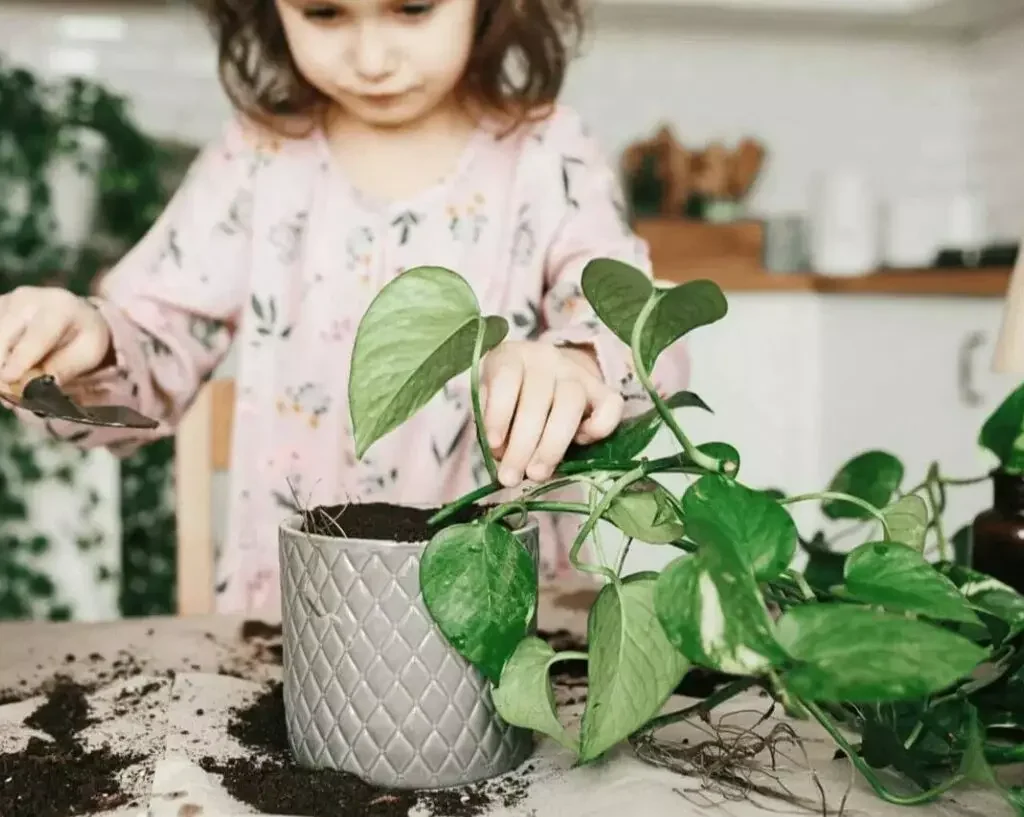
To understand the importance of drainage holes, it helps to first look at how plant roots work. Roots not only absorb water and nutrients but also require oxygen to function. Healthy soil should have a balance of water and air spaces, allowing roots to “breathe.”
When a pot lacks drainage holes, excess water gets trapped at the bottom. The soil becomes waterlogged, displacing oxygen and suffocating the roots. Over time, this leads to root rot, nutrient imbalance, and eventually plant death.
So, the primary purpose of drainage holes is to let excess water escape, maintaining the ideal moisture level in the potting soil.
2. Why Drainage Holes Are Essential for Indoor Plants
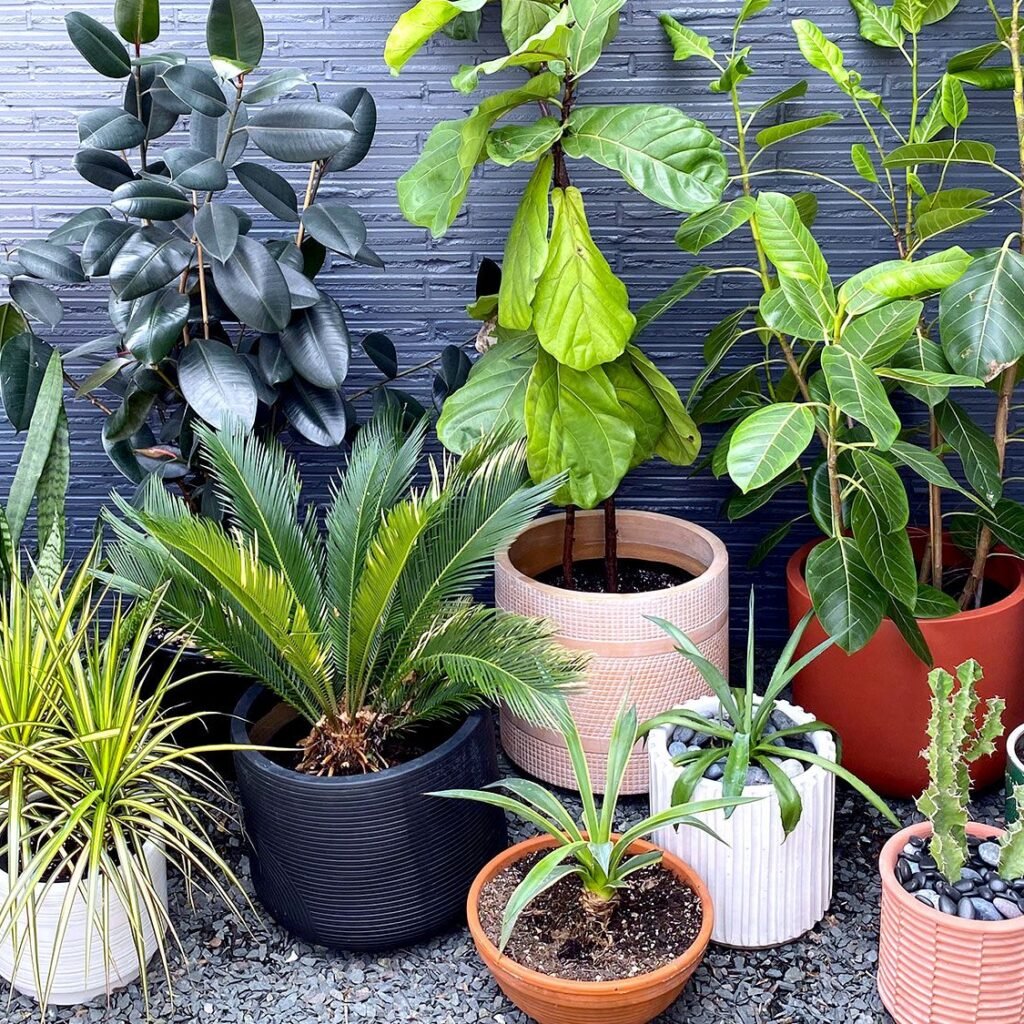
Let’s explore in detail why these small openings at the base of pots are essential to every successful indoor gardener.
a. Prevents Root Rot
Root rot is one of the most common and deadly problems in houseplants. It’s caused by fungal infections that thrive in soggy, airless soil.
When water cannot drain away, the roots remain constantly wet. Without oxygen, they begin to decay, turning soft, black, and mushy. Once root rot sets in, it can spread quickly, killing the entire plant.
Drainage holes allow water to flow freely, preventing prolonged saturation and ensuring the roots get enough air to stay healthy and firm.
b. Balances Soil Moisture
Every plant species has unique water requirements. Some, like ferns and peace lilies, enjoy slightly moist soil, while others, such as snake plants or succulents, prefer drier conditions. Drainage holes help create this balance naturally.
When you water, excess moisture exits through the holes, leaving just enough for roots to absorb. This prevents both underwatering and overwatering, ensuring your plant’s roots receive consistent hydration without drowning.
c. Flushes Out Excess Salts and Minerals
Each time you water your plants, minerals from fertilizers and tap water build up in the soil. Over time, these salts can accumulate and damage roots, leading to brown leaf tips, stunted growth, and nutrient lockout.
Drainage holes act as an escape route for these salts. When you water thoroughly, the excess solution carrying dissolved salts drains out the bottom, keeping the soil chemistry balanced and preventing toxic buildup.
d. Allows Healthy Root Expansion
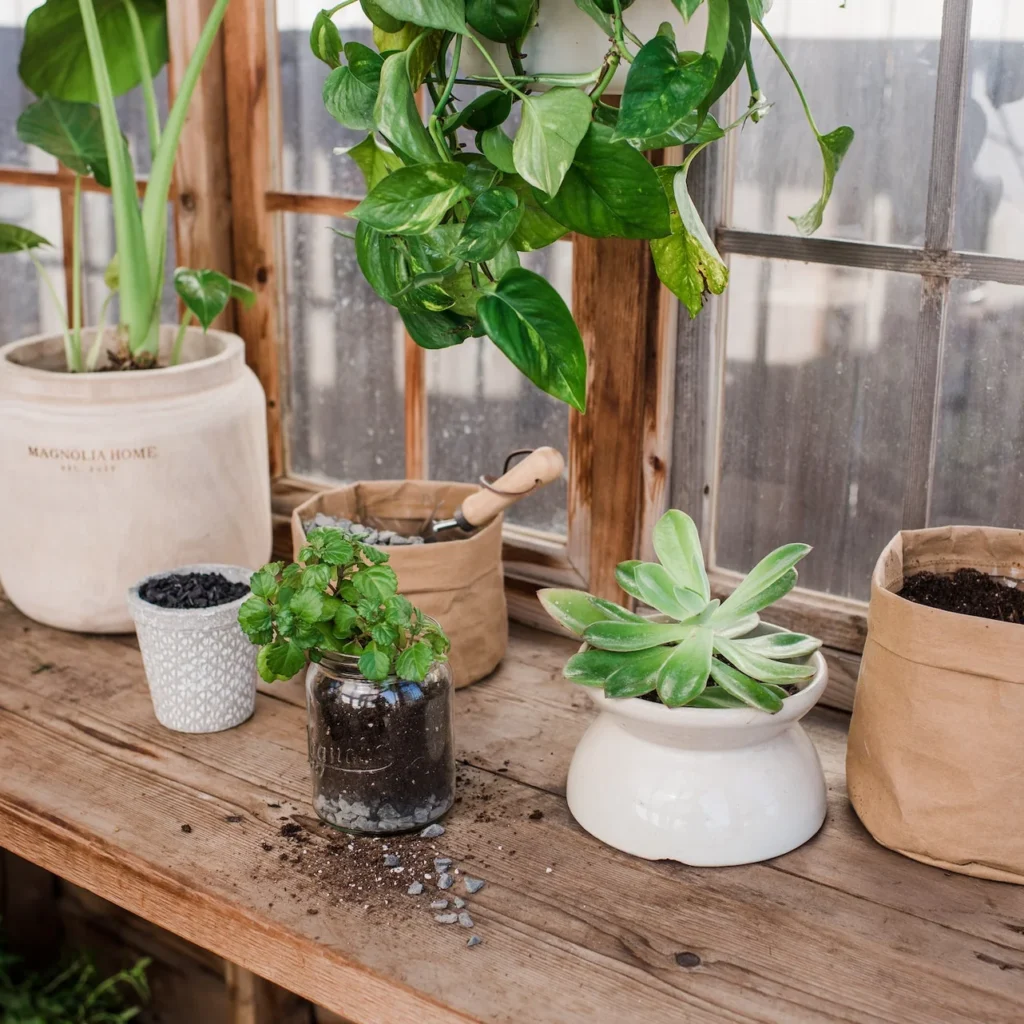
Roots naturally grow downward in search of moisture and nutrients. When pots have good drainage, the lower soil layers remain breathable and hospitable, encouraging roots to spread evenly throughout the pot.
In contrast, in pots without holes, the bottom layer becomes stagnant and airless, discouraging root growth. As a result, plants may become root-bound or develop weak, shallow root systems.
e. Reduces the Risk of Pest and Fungal Growth
Moist, poorly drained soil is a magnet for fungus gnats, mold, and bacterial diseases. These pests thrive in wet environments and can spread rapidly between houseplants.
Proper drainage reduces this risk significantly by ensuring that the top layer of soil dries out between waterings—something fungus gnats hate. It also prevents the sour, anaerobic smell often found in waterlogged pots.
3. What Happens If a Pot Doesn’t Have Drainage Holes
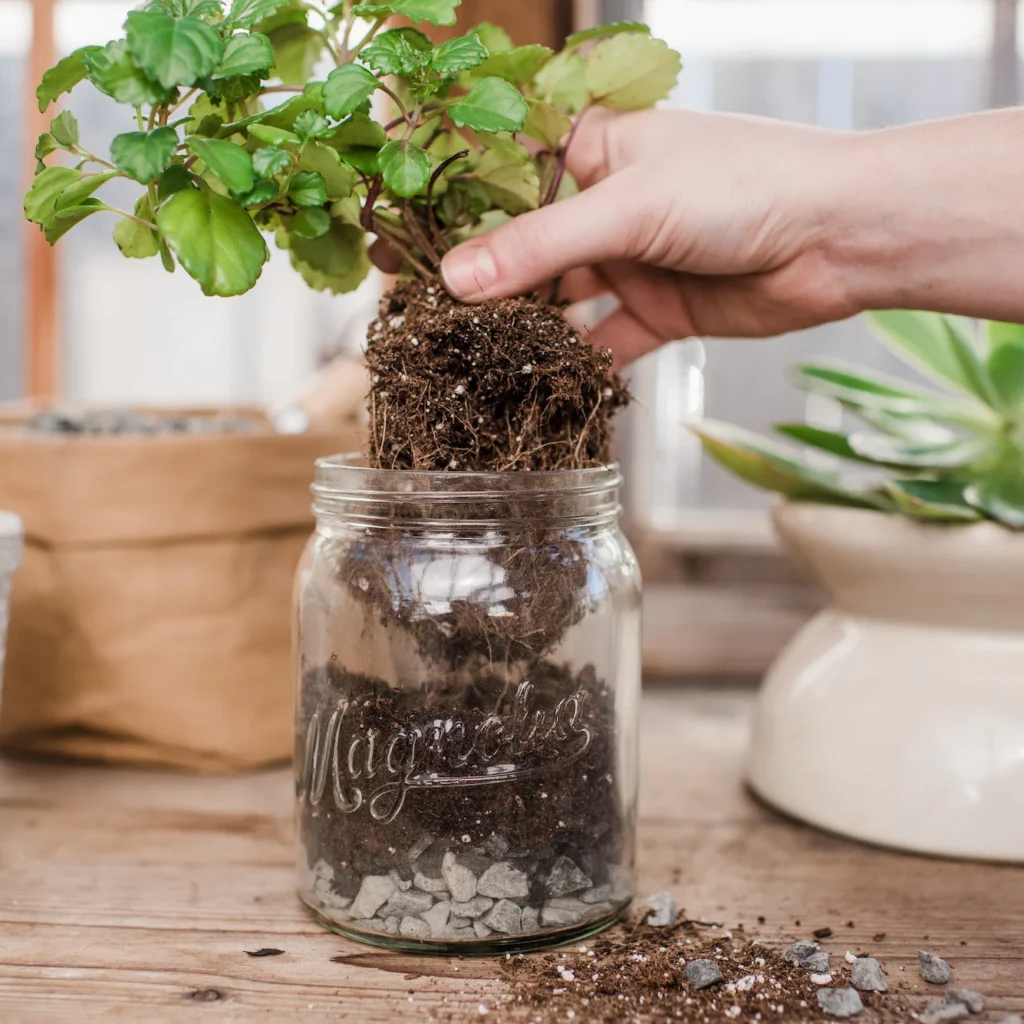
Despite their importance, many decorative pots are designed without drainage holes for aesthetic reasons. While they may look sleek, they can create a dangerous environment for your plants.
Here’s what typically happens in pots without drainage:
- Water stagnates at the bottom, creating a swampy zone.
- Roots suffocate due to lack of oxygen.
- Nutrients leach unevenly, leaving upper roots dry and lower roots rotting.
- Foul odor develops, signaling bacterial growth.
- Leaves yellow and drop, as the plant struggles to survive.
Over time, even hardy species begin to decline. That’s why every experienced plant keeper knows: a pot without drainage is like a bathtub without a drain—it will eventually overflow.
4. How to Ensure Proper Drainage in Indoor Plant Pots
If you want your indoor plants to thrive, you need to create an environment that mimics nature. Here are practical ways to ensure your pots have excellent drainage:
a. Always Choose Pots with Drainage Holes
Whenever possible, buy pots with pre-drilled holes at the bottom. These are specifically designed to support healthy root systems.
Look for:
- Multiple holes for large pots to ensure even drainage.
- Elevated bases or saucers to catch excess water without soaking roots.
- Unglazed clay or terracotta pots, which naturally allow air and moisture to pass through.
If your favorite pot doesn’t have holes, you can drill them yourself using a ceramic or diamond-tipped drill bit. Just make sure to do it carefully and avoid cracking the pot.
b. Use a Double-Pot or Cachepot System
If you want to use a decorative pot without drainage holes, try the double-pot method.
Here’s how:
- Keep your plant in a standard plastic nursery pot with drainage holes.
- Place it inside a slightly larger decorative pot (called a cachepot).
- After watering, empty any water that collects at the bottom of the cachepot.
This method combines functionality with style—your plant stays healthy, and your décor looks elegant.
c. Layer the Bottom with Pebbles or Charcoal
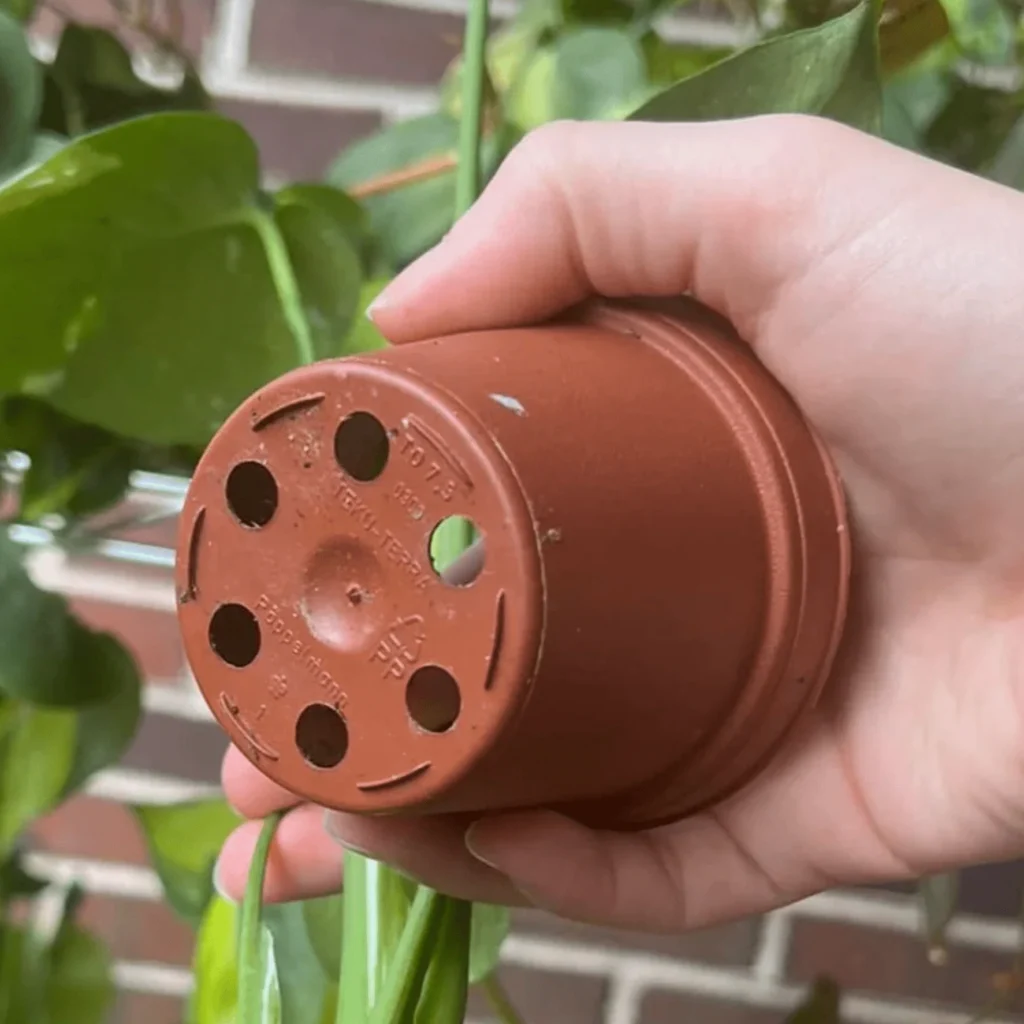
If drilling holes isn’t an option, add a drainage layer at the pot’s base. Use small pebbles, gravel, or activated charcoal.
These materials create an air gap below the soil, allowing excess moisture to settle away from roots. Charcoal also absorbs odors and toxins, keeping the soil fresh.
However, note that while this method helps, it doesn’t replace proper drainage holes. Water can still accumulate if not managed carefully.
d. Choose the Right Soil Mix
Even with drainage holes, dense soil can hold too much water. For optimal results, use a well-draining potting mix suited to your plant type.
Examples:
- For succulents and cacti: Use sandy or gritty soil with perlite.
- For tropical foliage plants: Mix peat moss, coco coir, and perlite.
- For ferns and moisture-loving plants: Use rich, loamy soil with some compost but still ensure light texture.
Light, airy soil prevents compaction and allows water to move freely through the pot.
5. How to Water Plants with Drainage Holes Properly
Drainage holes don’t mean you can water without care. The key is to water deeply but infrequently.
Follow this routine:
- Water thoroughly until excess begins to drain out of the holes.
- Discard any water that collects in the saucer after 15–20 minutes.
- Allow the soil to dry partially before the next watering.
This ensures that roots receive full hydration but are never left standing in stagnant water.
6. The Benefits of Good Drainage Beyond Plant Health
Beyond preventing root rot, proper drainage offers several long-term advantages:
- Better oxygen flow: Healthy roots mean faster nutrient uptake and stronger growth.
- Improved soil structure: Prevents compaction and maintains ideal porosity.
- Simpler care routine: Less risk of overwatering, making plant care more forgiving for beginners.
- Longer pot and plant life: Reduces mold, odor, and material decay in pots.
Simply put, drainage holes make your plant care easier and more successful in the long run.
7. What If You Already Have Pots Without Holes?
If your plants are already in non-draining pots, you can still fix the situation:
- Check moisture regularly: Use your finger or a moisture meter before watering.
- Water sparingly: Add small amounts of water gradually to avoid soggy soil.
- Repot occasionally: Refresh the soil every 6–12 months to prevent salt buildup.
- Monitor leaves closely: Drooping, yellowing, or browning can indicate water stress.
Whenever possible, repot into containers with drainage holes—the most reliable long-term solution.
8. Common Myths About Drainage Holes
Let’s clear up a few misconceptions many plant owners have:
- Myth 1: “Pebbles at the bottom eliminate the need for holes.”
→ False. Pebbles may delay waterlogging but don’t provide true drainage. - Myth 2: “Indoor plants don’t need drainage because they’re watered less.”
→ False. Even small amounts of excess water can suffocate roots over time. - Myth 3: “Drainage holes make a mess.”
→ Not if you use saucers or liners—they catch excess water neatly.
Knowing these truths helps you make better potting choices for long-term plant success.
Conclusion
Drainage holes are one of the most vital yet overlooked aspects of indoor plant care. They protect roots from suffocating, prevent salt build-up, maintain moisture balance, and ensure your plants grow strong and vibrant.
A pot without drainage might look sleek, but it’s a silent killer for plants. Whether you’re a beginner or a seasoned indoor gardener, always prioritize function over form—choose pots that allow water to escape freely.
With the right drainage setup, your indoor plants won’t just survive—they’ll thrive, displaying lush foliage and steady growth season after season.
Remember: healthy roots equal a healthy plant, and drainage holes are the gateway to that health.
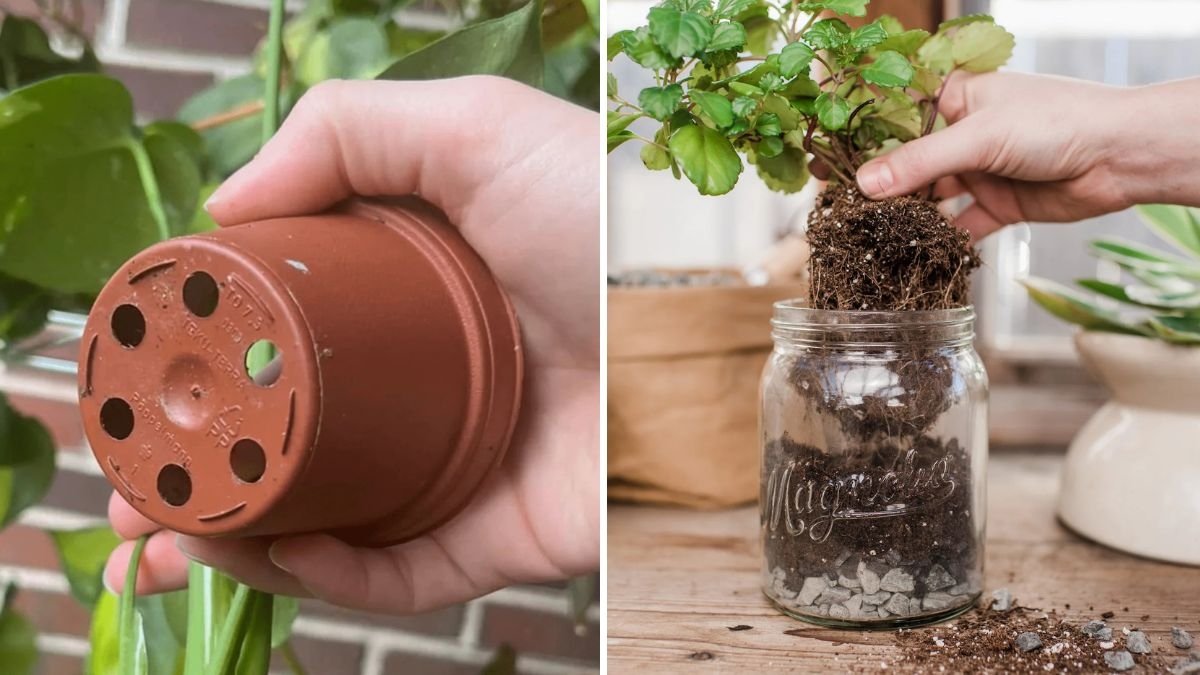




Leave A Comment